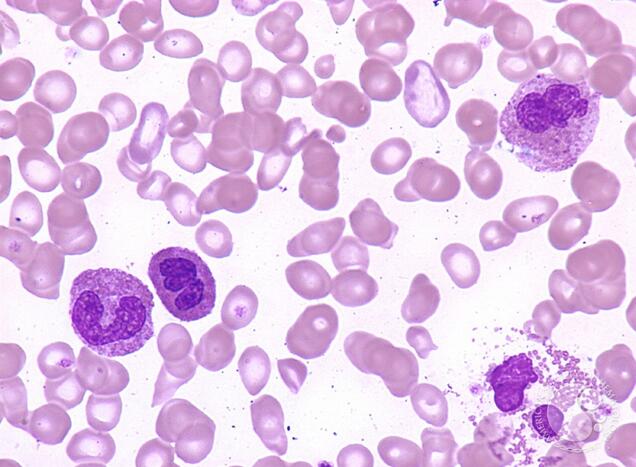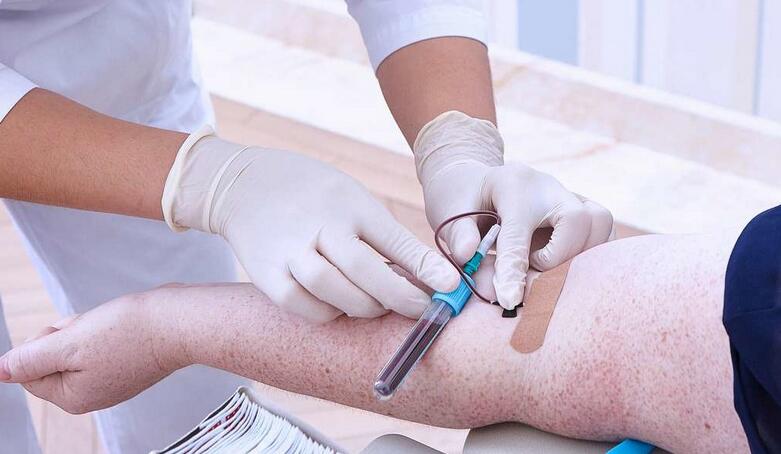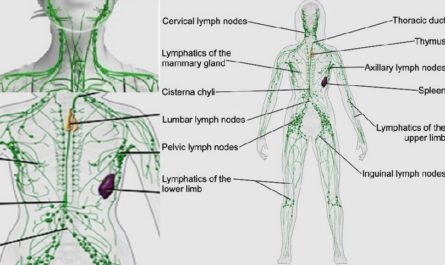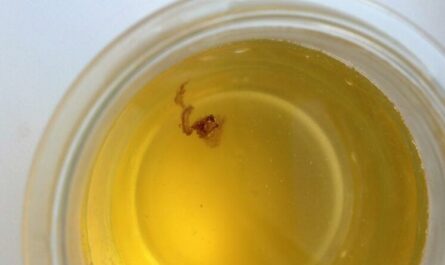Eosinophils are a type of white blood cell that fights against allergies and certain infections. They are typically seen in the blood and several tissues, including the lymph nodes, spleen, thymus, respiratory, gastrointestinal regions, and genitourinary tracts. When foreign substances enter the body, these cells can release inflammatory proteins to fight parasites or allergens.
Eosinophils usually increase in number when fighting an infection, which may cause high eosinophil levels. Certain diseases are associated with high eosinophil levels, such as allergic reactions and other types of immune disorders.
Certain medications, like beta-blockers and corticosteroids, can also cause elevated eosinophil counts. Eosinophils can become elevated when a person has a parasitic infection like malaria or toxoplasmosis. This article discusses eosinophils’ definition, symptoms, and high eosinophilia causes.

What do eosinophils do?
The eosinophil performs various tasks, some similar to those of other white blood cells. They can play a role in many inflammatory processes, particularly allergy diseases.
In addition, Eosinophils may also play a physiological role in the development of organs (e. g. post gestational mammary gland development).
They also play an essential role in the death of cells, the anti-parasitic and bactericidal activity, the involvement in immediate allergic reactions, and the modulation of inflammatory responses.
What Is an Eosinophil Count?
An eosinophil count is the number of eosinophils per milliliter of blood. Eosinophil count in healthy individuals is under 500 cells per microliter (cells/mcL). Different laboratories may have slightly different normal value ranges.
An absolute eosinophil count is the number of eosinophils per liter of blood. Eosinophils are a type of white blood cell that fights infection. The absolute eosinophil count is often used as an indicator of allergies and asthma.
An eosinophil count above 5 per liter of blood is considered abnormal. Eosinophils are activated when someone is exposed to allergens, such as dust or pollen. The number of eosinophils in the blood will go up and stay there for a few days. You may have an elevated absolute eosinophil count if you have asthma or allergies.

Causes of Low Eosinophil Levels
Low eosinophil levels can cause various symptoms, ranging from minor to severe. People with low eosinophil levels may experience allergies, asthma, decreased immunity, frequent infections, and other conditions.
There are many reasons for Low eosinophil levels. Alcohol intoxication or excessive cortisol production, such as in Cushing’s illness, can lead to a meager eosinophil count.
In addition, the time of day may also play a role in low eosinophil counts. Eosinophil numbers are typically lowest in the morning and most significant in the evening.
Some common causes of low eosinophil levels include:
1. Steroids
Steroids are drugs with extreme anti-inflammatory effects. It reduces swelling, pain, and redness. Some people use steroids to treat inflammation or to manage pain from arthritis and lupus. This results in a lower eosinophil count.
2. Cushing’s syndrome
Cushing’s syndrome is when there is too much cortisol in your body. Too much cortisol can affect the immune system, causing the eosinophil count to be low.
3. Tumor of the adrenal cortex
Tumors of the adrenal cortex can produce the hormone cortisol, leading to a low eosinophil count. The other symptoms include fever, Weightloss, Asthma, and Loss of appetite.
In addition, People with asthma are more likely to suffer from low eosinophil counts. Because these cells can cause damage to the tissue in the patient’s lungs, resulting in lower levels of eosinophils in the body.
4. Blood disease
Some blood disorders, such as anemia, leukemia, blood cancer, and platelet disorders, can also cause low levels of eosinophils.
In addition, certain conditions can cause a low eosinophil count in your body.
- Parasitic diseases: Because the body responds differently to each parasite, some parasites can cause low levels of eosinophils.
- Immune disorders: Dermatitis or pemphigus can also cause low eosinophil counts.
- Some Medications: Some medications such as prednisone and tricyclic pain relievers may cause this. Cortisol-related anti-inflammatory drugs are called glucocorticoids. Regular using of these drugs can lead to decreased eosinophils’ production, survival, and function.
- Endocrine problems: Addison’s disease is also a common cause of low eosinophil counts.
Causes of High Eosinophil Levels
Eosinophils can create persistent inflammation that damages tissue when the body produces an excessive amount of them, a condition known as “eosinophilia.”
Eosinophilia is characterized by excessive amounts of eosinophils. The symptoms of eosinophilia may range from mild to severe, depending on the condition’s cause. However, most of the symptoms can be treated.
High eosinophil levels indicate an underlying condition or disease—the common causes are listed below.
1. Infection or stress
Eosinophils are produced in the bone marrow, and like all other blood cells, they have a lifespan of about 120 days. The process of eosinophil production is rapid and can be increased in response to infection or stress.
In response to infection, cytokines are released that stimulate the eosinophils to produce more cytokines, which stimulates more eosinophils.
2. Eczema
In eczema, eosinophils are thought to contribute to itching. Eosinophils are activated by allergens, and allergic reactions are mediated by proteins called cytokines (mainly IL-4 and IL-13). So, eosinophils may be elevated because of allergies.
3. Eosinophilic gastrointestinal diseases
It is a frequent eosinophil condition.EGID are illnesses that affect the digestive system and result in a clump of eosinophil cells inflaming and swelling the area.
EGIDs can affect the bladder, esophagus, stomach, small intestine (eosinophilic gastroenteritis), and large intestine (eosinophilic colitis).
4. Autoimmune disorder
Eosinophils are involved in the development of certain autoimmune disorders. When eosinophils become too active, they can cause damage to your body.
Eosinophils are primarily active during allergic reactions. One study found that eosinophils were significantly elevated in people with autoimmune disorders.
5. Cancer
High Eosinophil Levels can be developed due to certain cancers such as Lung cancer, Colorectal cancer, Leukemia, and Lymphoma. If you have other symptoms, such as fever, vomiting, weight loss, etc., seek medical help as soon as possible.
6. Parasitic Infection
Parasitic infection is the most common cause of high eosinophil levels. The common parasitic infection includes strongyloidiasis, Schistosomiasis, ascariasis, and trichinosis.
Since these parasites are found worldwide, you need to be checked even if you are not traveling.
7. Foods
Some foods can also lead to high eosinophil levels. These foods include eggs, soy, wheat, etc.
How dangerous are High Eosinophil Levels?
The degree of eosinophilia might be minor, moderate, or severe, depending on your eosinophil count. High eosinophil levels may signify a minor illness, such as an allergic reaction to a medication, or a more severe condition, such as various blood disorders.
Sometimes, large concentrations of eosinophils congregate in one location on your body, leading to inflammatory diseases that can affect other parts of your body.
What can happen if eosinophil counts are high?
Eosinophil levels that are elevated may indicate an infection or an allergic reaction. Eosinophil counts are increased by allergic conditions such as medication sensitivity, asthma, allergic rhinitis, and atopic dermatitis.
Eosinophilia can also be caused by numerous parasites, particularly those that enter the tissue. Eosinophilia can be brought on by cancers, including Hodgkin lymphoma, leukemia, and certain myeloproliferative neoplasms.
People typically have no symptoms if the blood eosinophil count is slightly increased. The high blood eosinophil count is only found after a complete blood count is performed for another reason.
However, occasionally, especially when the eosinophil count is exceptionally high, the elevated eosinophil count damages organs and irritates tissues.
Although any organ can be harmed, the heart, lungs, skin, and nervous system are most frequently impacted. The afflicted organ is related to the symptoms. For instance, when the skin is affected, individuals may experience a rash, wheezing, and exhaustion (which are signs of heart failure).
When the heart is affected, or when the esophagus or stomach is impacted, individuals may experience throat and stomach pain.
How to Treat Eosinophilia and High Eosinophil Levels?
Your doctor will suggest a course of action based on the particular circumstances. It may require medication, dietary modifications, or surgery alone. For instance, your doctor can recommend steroids or other drugs if you have eosinophilic esophagitis.
Suppose you have chronic sinusitis or allergies that cause high eosinophil levels. In that case, your doctor may advise allergy testing to identify the allergens that caused the allergic reaction that led to the elevated levels of eosinophils.
Your healthcare professional would typically recommend stopping or avoiding medicine if it contributes to eosinophilia. Your healthcare professional will deal with any infections if they exist.
If blood cancer exists, it will be treated by your doctor. Your doctor can suggest additional endoscopy and biopsy track your progress during therapy.






